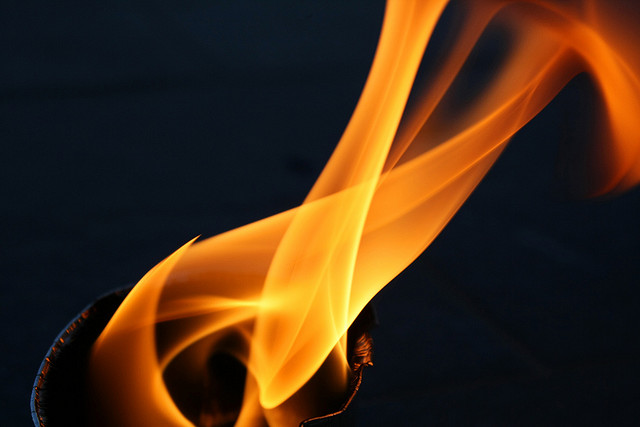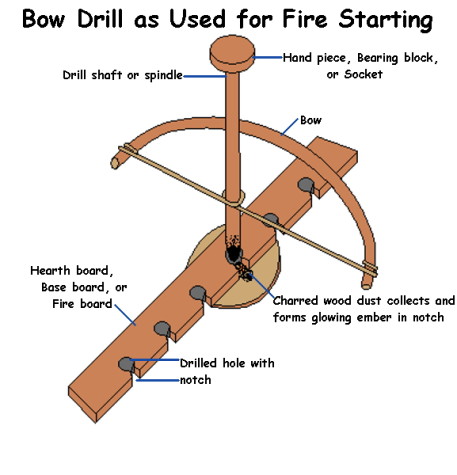 I quit glassblowing because it pissed me off too much. It’s been ten years since I’ve done it, so I don’t remember much about how to make a goblet or a vase or a Christmas ornament. What I do remember is the bright eye of the furnace, the relentless heat, and the crazy dreams that I had after late-night sessions in the shop. My nights were filled with color, with people transforming into animals or into each other, with rainbow storms and trippy blobs that looked like moving Rorschach tests.
I quit glassblowing because it pissed me off too much. It’s been ten years since I’ve done it, so I don’t remember much about how to make a goblet or a vase or a Christmas ornament. What I do remember is the bright eye of the furnace, the relentless heat, and the crazy dreams that I had after late-night sessions in the shop. My nights were filled with color, with people transforming into animals or into each other, with rainbow storms and trippy blobs that looked like moving Rorschach tests.
In the dreams I was often angry. In the glass shop I was often angry, too, because I found it so frustrating and I was so terribly, terribly bad at blowing glass, at shaping it on the bench, at doing much of anything at all besides staring into the fire and, later, having the circle of it burned into my dreams.
Fire is frustrating. It seems like—at least for me—when I want one, I can’t get one. Over the weekend, I made a careful structure of tinder and sticks. But it took multiple flicks of a lighter, and sheets and sheets of twisted newspaper, for all my work to catch.
And then those times that you don’t want a fire—on a dry fall day when the wind picks up, when you think your campfire’s all the way out, when you’re just trying to cut back the weeds—it lights all too easily. Even today, there’s a new brush fire about an hour from where I am; a friend of a friend gathered up the livestock she could and had to open her gates and let the rest go.
A fire needs some of the same things we all need to survive: oxygen to breathe, fuel to eat, and some heat to get things started. In his book Fire: Nature and Culture, Stephen J. Pyne describes the delicate balance among this triad. First, heat pushes water from the wood. It chews chemical bonds within the fuel and spits out gases. If everything goes right, the gases start to burn, which makes the flickering flames we see. The solid fuel starts combusting, too, with the help of oxygen, creating the fire’s glow.
Gazing into a campfire, you’re watching a series of reactions tumbling over each other: burning fuel raises the temperature, getting more fuel to ignite. The rising column of heat from the fire draws in oxygen, which increases the burn.
 In the last month, I’ve taken a few classes about starting a fire from scratch. Over the weekend, I went up with the group to the river to look for materials to make a bow drill.
In the last month, I’ve taken a few classes about starting a fire from scratch. Over the weekend, I went up with the group to the river to look for materials to make a bow drill.
First, we looked for cottonwood, a medium-soft wood, to use for the fireboard. Cottonwood is in the poplar family, like aspens, and its leaves shimmered like aspen leaves in the light breeze. Then we cut mule fat, a shrubby California native that has straight stems that make good spindles. I’ve heard that people used to tie their mules near the plants, and the animals would get fat in the creek beds where it grows.
At home I made a little bundle of tinder and then set up my drill. (The wood from the class is still in my backpack; it’s amazing what you can get on Amazon.) I tightened and loosened the bowstring. I leaned into the spindle. Black fluff started coming out of the notch of wood. Then smoke. And then I got excited and lifted up the board and the motion made the dust flutter away, not hot enough to burn.
I tried again. I got angry. I had a glass of wine. I tried again and again and my hands blistered and my back started to hurt from crouching over the drill. I got angrier. (I later came across a study reporting that 81 percent of the adult patients admitted to one burn center with campfire burns were intoxicated.) Finally I got out the lighter.
It’s been a long time since I’ve done so much preparation work and seen nothing come of it. That’s what I thought at first, anyway. But maybe the bow drill just provides an immediate, illuminated example of how very often I don’t succeed. Elsewhere failure seems to be so distanced from what I do in the present—the story that comes out months after I’ve written it, the hysterical child who missed his nap two days ago, the pages and pages of a peripatetic book project—that where I go wrong doesn’t seem so immediate, failure like a gauzy dream I can’t quite remember, that’s easier to forget.
My oldest son watched me for a while. “Why is it not working?” he said. He took the spindle between his hands and spun it on the board for a while. Then he shrugged and handed it back to me.
Saturday night, after the lighter and the newspapers, after the marshmallows and the sticks and the near-falls into the fire and the near-impalements of eyes, we all sat in front of the fire and just watched it burn.
And in the middle of the night, I woke up with a dream that I told myself I needed to remember. There were more dreams—of friends who were pregnant, of strange settings and parties that whirled like carousels. But then I had a bow drill and spun it and spun it and there was a coal, a smoking coal that could start a fire. “Look!” I said in the dream, holding it up.
When I woke up, I told myself to remember this so I could tell you. What I can’t remember is whether the fire started or not. Maybe that part doesn’t matter as much as I thought.
**
Top image by Giacomo Carena via Flickr
Bow drill diagram by Wikimedia Commons user Reddi
Why not, instead of driving, hop to work